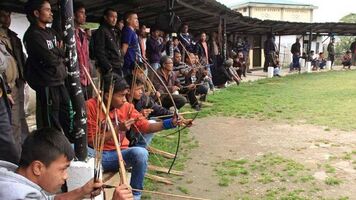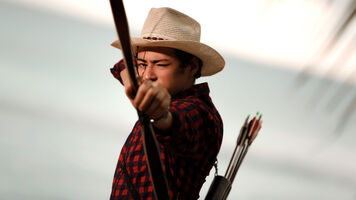Gungdo revival part 1: The ancient archery discipline coming back to life

In a highly advanced, technological centric time, it turns out there is still a place for ancient traditions to be practised.
In Korea, a country world renowned for its modernised, futuristic infrastructure, there is an increasing wave of a sport that dates back centuries ago in the nation’s universities.
It is Korean Traditional Archery (KTA, also known as gungdo, or gukgung in Korean), not just a sport that foregone Korean kings and queens did to wind down from their ongoing affairs, but also something which has strong military connections.
Only in the 21st century, the gakgung – a Korean bow made from water buffalo horn and tendon glue – is a rare commodity with laminated fibreglass and modern glue a common replacement for the materials.
At first glance, this traditional bow looks very much like the Olympic recurve bow but a more basic version with there being no stabilisers, sights or pulleys attached, which makes firing it accurately onto the target even harder.
But why in the past decade has a niche like Korean Traditional Archery prospered so much at university level?
It is often perceived that students prefer to spend a lot of their free time scrolling on the endless timeline of social media or going out.
Korean students however have an appetite to go back to their roots and try out activities that their ancestors once did, just having a more modern, youthful approach.

Traditional archery falls under this ‘hip tradition’ in Korea.
“If you were looking at Olympic dominance, well then this should have happened in the 90s,” said Andrew White, a Business English professor at Induk University in north eastern Seoul, who is also the university’s KTA club advisor and founder. “It’s a way that Korean young people want to disengage from their electronic, cell phone centred existence.”
“It’s a way that they want to rediscover their history, and Korea has a very strong history in terms of culture and sport and a proud tradition.”
“This is all very much ingrained in Korean history, and so for younger generations to maybe steal part of that history with simply shooting a bow, that’s very much like those of 100 or 300 years ago.”
“It can put these younger generations in touch with their lineage,” he added.
White has lived in Korea since moving over from the USA in 1996 and has been a traditional archery practitioner himself for 20 years after a fellow professor invited him to a jeong, fixed 145-metre archery ranges specifically for the discipline, which are scattered across the country, that’s more than double the standard 70-metre Olympic recurve distance.
The American’s passion for this recreation coincided with its recent renaissance amongst young Koreans and led him to start Induk’s very own traditional archery club in 2021, although it must be stated he plays an advisory role not a coach.
He calls himself the “middle man”, the person signing documents and sponsorship deals between university and club.

Nevertheless, White’s role has been a part of the rise of 23 clubs in Seoul and 48 nationwide with most starting in 2015 according to the Korean Archery College Federation.
Since then, it is also reported in a survey conducted by the federation that 10 to 20 members are joining Korean Traditional Archery clubs each semester with 70 to 80 new members per club per year and “the number is continuously increasing,” says White.
So much so that competitions have now started to be organised with the first one held at Induk in August, the 8:15 Liberation Day Commemorative, organised by White, other advisory professors and club leaders from Seoul’s universities such as Yonsei, Dongguk and Seoul’s Women University.
The most recent was on 17 November, the Second Patriots’ Day KTA competition at the indoor Hwalssoa range in the Nowon Gu district, which saw Induk come third overall with one of its members winning the freshman category.
Due to the enormous density Seoul is as a city however, room to have 145-metre ranges for universities is hard to come by, which is one of the reasons students shoot at lesser distances as well as it being much easier for them at beginner level.
“More popular is 30 metres, 50 metres and there’s totally nothing wrong with that at all,” said White when explaining the university rules. “The bows allow it. Smaller targets are needed but it kind of goes against the determined rules of the sport that have been happening, that Korea knows of.”
"I don’t want to say redefine, but the archery activity is more accessible to university students at the smaller level.”
In addition to tournaments, there is also the chance to upgrade students’ 'dans', like black belts in martial arts, through approved sanctioned tests where the archers must hit the target so many times to get one ‘black belt’.
For tests on dans one to three, the modern laminated bows are used but from dans four and above, archers are required to shoot with the true traditional gakgung bow, which can cost around USD 700, much more than the laminated ones at USD 300.
The pricier gakgungs are made from water buffalo horn, fish bladder glue, bamboo strips and birch tree bark, inducing to keep the traditional craftmanship alive.
This was Part 1 on Korean Traditional Archery. Read Part 2.





